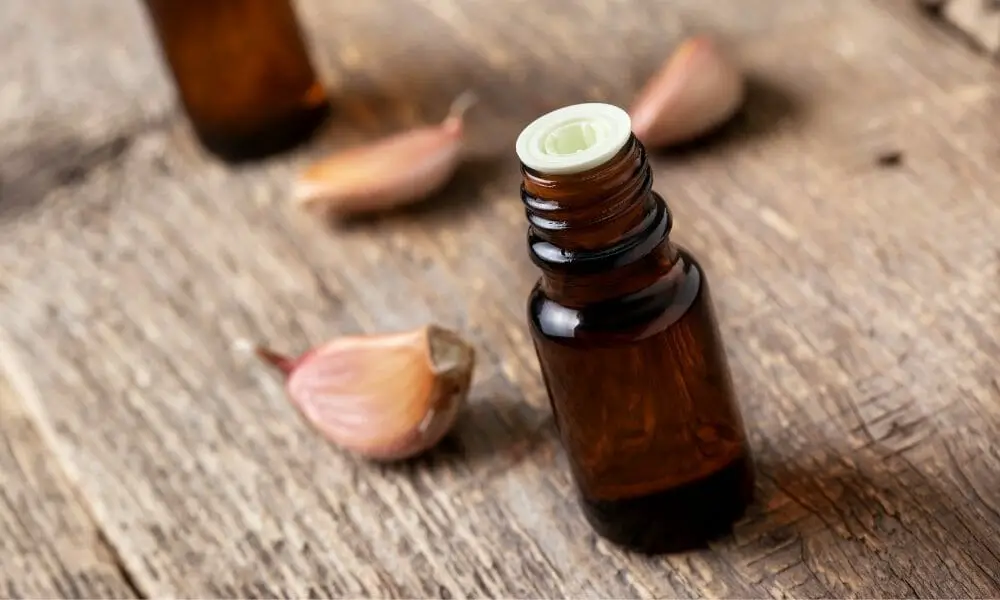Cooking with essential oils is an exciting topic. And yes, you can definitely cook with essential oils—some of them.
Ancient civilizations and some modern ones have been cooking with essentials since the beginning of essential oils. But most people seem to have lost these traditions for aroma, flavors, and nutritional benefits due to processed foods, synthetic substitutes, and convenient foods.
Therefore, modern society seems to think that cooking with essential oils is a new thing or isn’t safe. Especially since they’re mostly used for cosmetic reasons.
The reality is that essential oils are used in many everyday products such as soda, toothpaste, desserts, and more. It takes such a small addition of essential oils in foods because they are pure and concentrated.
You get lots more flavor and nutritional benefits from oils than you do with fresh or dried herbs, plants, and spices. But are they completely safe?
Can You Cook With Essential Oils?

Most therapeutic essential oils are ingestible and edible. They are made from plants, after all. With the tiny amount of actual oil required in cooking, there isn’t much risk in toxicity, and they are harmless.
However, it’s important to be aware of the potential toxicity of some of them. And when adding too much of them.
The Potential Toxicity
Upon ingestion, these plant compounds go into the bloodstream and then to the organs. Its been proven that essential oils are absorbed directly into the bloodstream and then through the blood-brain barrier.
Then they attach to the different receptors in the central nervous system and deliver their beneficial effects and results. After being metabolized, they must clear out of the body through the kidneys or exhaled as carbon dioxide through the lungs.
Because the metabolizing period of these plant compounds is extremely quick there is minimal risk. But large doses can hinder that process. So make sure only to use a drop or two when cooking.
And that’s all you need too. Frankly, if you use more than that, the flavor will be so strong that it’ll be unbearable.
In fact, with some of the more potent oils such as cinnamon, clove and peppermint (which is essential great oil for a sore throat), you only need such a tiny amount that using a toothpick dip is enough.
Ingesting Too Much Essential Oils
Some essential oils in significant amounts may burn the mucous membranes of the throat, esophagus, and oral cavity. Too much of any oil may aggravate the digestive tract, which leads to acid reflux.
They may make medications useless and may even cause complications such as seizures. Some may cause diarrhea, vomiting, and or nausea. They may increase liver enzymes and may also interfere with anesthesia.
Discover a range of nourishing options in The Ultimate Guide To Oils For After Shaving: Achieve a Smooth and Nourished Skin to soothe your skin and enhance your grooming routine.
Long Term Effects Of Ingesting Too Much Essential Oils
Kidney and liver problems can arise when consuming essential oils incorrectly for too long. Fatty liver disease, liver failure, liver cancer and enlargement of the liver are all risk factors.
Essential Oils For Cooking & Amounts
Use 100% pure therapeutic-grade oils for ingesting. The FDA has a Generally Recognized as Safe (GRAS) list that you can refer to.
The recommended amounts for ingesting is a range of 1 to 3 drops. And around 1 to 3 times per day. But keep in mind, even some of the oils listed on the GRAS list, you should be vigilant with.
One example is wintergreen oil. Although it’s often added to foods, we do not recommend oral ingestion of wintergreen except for a very tiny amount. So it’s better to avoid it altogether.
Here are some of the most common oils listed on the GRAS list. Feel free to press CTRL+F and search for your favorite one.
- Alfafa
- Allspice
- Almond (Bitter & No Prussic Acid)
- Ambrette Seed
- Angelica Root (Not For Diabetics)
- Angelica (Seed & Stem)
- Anise
- Balm (Lemon Balm)
- Basil
- Bay Leaves
- Bergamot
- Bitter Almond (free From Prussic Acid)
- Cacao
- Chamomile (flowers)
- Caraway
- Cardamon
- Carrot
- Cassia Bark
- Celery Seed
- Cherry (Wild, Bark)
- Chicory
- Cinnamon Bark
- Cinnamon Leaf
- Citronella
- Citrus Peels
- Clover
- Coffee
- Cola Nut
- Coriander
- Cumin
- Curacao Orange Peel (Orange, Bitter Peel)
- Dandelion
- Elder Flowers
- Fennel (Sweet)
- Geranium
- Ginger
- Grapefruit
- Guava
- Hickory Bark
- Horehound
- Hops
- Horsemint
- Hyssop
- Jasmine
- Juniper (Berries)
- Kola Nut
- Laurel Berries
- Laurel Leaves
- Lavender
- Lavandin
- Lemon (Balm, Grass, Peel)
- Lime
- Linden Flowers
- Locust Bean
- Lupulin
- Mace
- Mandarin
- Marjoram (Sweet)
- Menthol
- Molasses (Extract)
- Mustard
- Naringin
- Neroli (Bigarade)
- Nutmeg
- Onion
- Orange (Bitter, Sweet, Flowers, Peels)
- Orange Leaf (Sweet)
- Palmarosa
- Paprika
- Parsley
- Pepper (Black)
- Pepper (White)
- Peppermint
- Petitgrain (Lemon, Mandarin, Tangerine)
- Pimenta
- Pimenta Leaf
- Pomegranate
- Prickly Ash Bark
- Rose Absolute
- Rose (Ott Of Roses, Attar Of Roses)
- Rose Buds
- Rose Flowers
- Rose Fruit (Hips)
- Rose Geranium
- Rose Leaves
- Rosemary
- Saffron
- Sage (Greek, Spanish)
- St. John’s Bread
- Savory (Summer)
- Savory (Winter),
- Spearmint
- Spike Lavender
- Tamarind
- Tangerine
- Tarragon
- Tea
- Thyme (Regular, White, Wild, Creeping)
- Tuberose
- Turmeric
- Vanilla
- Violet (Flowers, Leaves, Leaves Absolute)
- Wild Cherry Bark And Ylang Ylang

